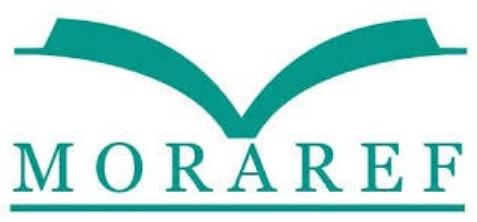The Impact of Local Taxes, Population Growth and Inflation on Islamic Economic Growth Perspectives
Abstract
Keywords
References
Adisasmita, R. (2013). Teori-teori pembangunan ekonomi: pertumbuhan ekonomi dan pertumbuhan wilayah / Rahardjo Adisasmita. In undefined.
Antonio. (2020). Analisis Pengaruh Laju Penerimaan Pajak, Pertumbuhan Penduduk dan Laju Inflasi terhadap Rasio Pajak Daerah di Pulau Jawa tahun 2006-2018. Fakultas Ekonomi Dan Bisnis Universitas Brawijaya, Malang, 3.
Basuki, T. A. (2021). Analisis Data Panel dalam Penelitian Ekonomi dan Bisnis.
Chalid, P. (2017). Materi Pokok Teori dan Isu Pembangunan. Universitas Terbuka, 475.
Dewi, J. K., & Sri Budhi, M. K. (2018). Analisis Pengaruh Pajak Daerah, Retribusi Daerah Terhadap Tenaga Kerja Dan Pertumbuhan Ekonomi Di Kota Palangka Raya Provinsi Kalimantan Tengah. E-Jurnal Ekonomi Dan Bisnis Universitas Udayana. https://doi.org/10.24843/eeb.2018.v07.i06.p08
Eza Okhy Awalia Br Nasution, Listika Putri Lestari Nasution, Minda Agustina, & Khairina Tambunan. (2022). PERTUMBUHAN EKONOMI DALAM PERSPEKTIF ISLAM. Journal of Management and Creative Business, 1(1). https://doi.org/10.30640/jmcbus.v1i1.484
Fauzan, & Mahmuddin. (2019). Pengaruh Inflasi dan Pertumbuhan Penduduk Terhadap Pertumbuhan Ekonomi Kota Lhokseumawe. Jurnal Akuntansi Dan Pembangunan, 5(1), 11–22.
Hamzah, R. A. (2021). Analisis Pertumbuhan Ekonomi Provinsi Jawa Barat Periode Tahun 2010-2020. Jurnal Ilmu Ekonomi, 02(02), 138.
Hartati, N. (2020). Pengaruh Inflasi Dan Tingkat Pengangguran Terhadap Pertumbuhan Ekonomi Di Indonesia Periode 2010 – 2016. Jurnal Ekonomi Syariah Pelita Bangsa, 5(01), 92–119. https://doi.org/10.37366/jespb.v5i01.86
Hasan, M., & Azis, M. (2018). Pembangunan Ekonomi & Pemberdayaan Masyarakat: Strategi Pembangunan Manusia dalam Perspektif Ekonomi Lokal. In CV. Nur Lina.
Kusuma, I. gede A. P., Kawiana, I. G. P., & Wulandari, N. L. A. A. (2023). “Pengaruh Citra Perusahaan dan Kualitas Pelayanan Terhadap Kepuasan Anggota Pada Koperasi Bayu Sudana di Tabanan.” Widya Amrita: Jurnal Manajemen, Kewirausahaan Dan Pariwisata, 3(6).
Mahzalena, Y., & Juliansyah, H. (2019). Pengaruh Inflasi, Pengeluaran Pemerintah Dan Ekspor Terhadap Pertumbuhan Ekonomi Di Indonesia. Jurnal Ekonomi Regional Unimal, 2(1), 37. https://doi.org/10.29103/jeru.v2i1.1742
Miswar, Lianda, P. Y., & Priantana, R. D. (2021). Analisis Pengaruh Pajak Daerah Dan Retribusi Daerah Terhadap Pertumbuhan Ekonomi Di Aceh. Jurnal Mahasiswa Akuntansi Samudra, 2(3), 153.
Mustaqiem, H. (2008). Pajak Daerah dalam Transisi Otonomi Daerah. FH UII PRESS.
Nisa, Z., & Bahari, F. (2022). Effect of Regional Tax, Population, and GRDP on Original Local Government Revenue (PAD) in the Regency/City of Central Java Province. Jurnal Samudra Ekonomi Dan Bisnis, 13(1), 90–99. https://doi.org/10.33059/jseb.v13i1.2220
Olfiani dan Handayani. (2019). Pengaruh Current Ratio (CR), Total Assets Turnover (TATO), dan Debt to Equity Ratio (DER) Terhadap Pertumbuhan Laba PT. Tempo Scan Pasific, Tbk Periode 2008-2017. Jurnal Ilmiah Akuntansi Dan Manajemen (JIAM), 15(2).
Priyono. (2008). Metode Penelitian Kuantitatif.
Rosyeetti. (2009). Studi Keterkaitan Pertumbuhan Penduduk Dengan Pembangunan Ekonomi Di Kabupaten Kuantan Singingi. Sistem Informasi, 1, 13.
Santi dkk. (2001). Pengantar Ekonomi Pembangunan.
Simanungkalit, E. F. B. (2020). Pengaruh Inflasi Terhadap Pertumbuhan Ekonomi Di Indonesia. Journal of Management : Small and Medium Enterprises (SMEs), 13(3), 327–340. https://doi.org/10.35508/jom.v13i3.3311
Suryana. (2010). Metodologi Penelitian Model Praktis Penelitian Kauntitatif dan Kualitatif.
Wujarso, R. (2022). Peran Human Capital Dalam Pertumbuhan Ekonomi. Journal of Information System, Applied, Management, Accounting and Research, 6(2).
DOI: http://dx.doi.org/10.31332/lifalah.v8i2.8922
Copyright (c) 2023 Jamaludin Jamaludin, Ahmad Didin Hafiduddin, M Alfialhubufillah, Abdullah Husenuddin

This work is licensed under a Creative Commons Attribution-ShareAlike 4.0 International License.
Li Falah : Jurnal Studi Ekonomi dan Bisnis Islam, Indexed In
Accredited By
View My Stats
Organized by : Fakultas Ekonomi dan Bisnis Islam
Published by : Institut Agama Islam Negeri Kendari
Jl. Sultan Qaimuddin No. 17 Baruga Kota Kendari Provinsi Sulawesi Tenggara
phone. +62401-3193710
Fax. +62401-3193710
Email: [email protected]












